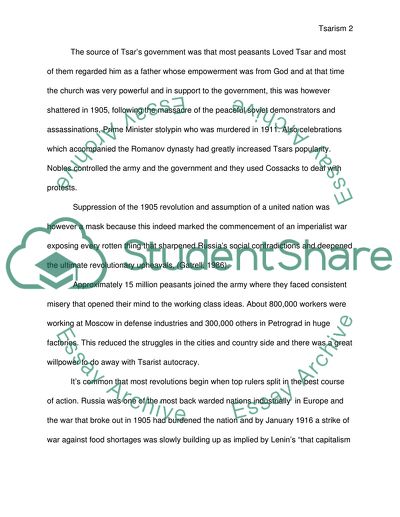Cite this document
(The Period of Tsarism in Russia Essay Example | Topics and Well Written Essays - 2000 words, n.d.)
The Period of Tsarism in Russia Essay Example | Topics and Well Written Essays - 2000 words. Retrieved from https://studentshare.org/history/1563784-why-did-tsarism-survive-in-1905-but-not-in-february-1917
The Period of Tsarism in Russia Essay Example | Topics and Well Written Essays - 2000 words. Retrieved from https://studentshare.org/history/1563784-why-did-tsarism-survive-in-1905-but-not-in-february-1917
(The Period of Tsarism in Russia Essay Example | Topics and Well Written Essays - 2000 Words)
The Period of Tsarism in Russia Essay Example | Topics and Well Written Essays - 2000 Words. https://studentshare.org/history/1563784-why-did-tsarism-survive-in-1905-but-not-in-february-1917.
The Period of Tsarism in Russia Essay Example | Topics and Well Written Essays - 2000 Words. https://studentshare.org/history/1563784-why-did-tsarism-survive-in-1905-but-not-in-february-1917.
“The Period of Tsarism in Russia Essay Example | Topics and Well Written Essays - 2000 Words”. https://studentshare.org/history/1563784-why-did-tsarism-survive-in-1905-but-not-in-february-1917.


